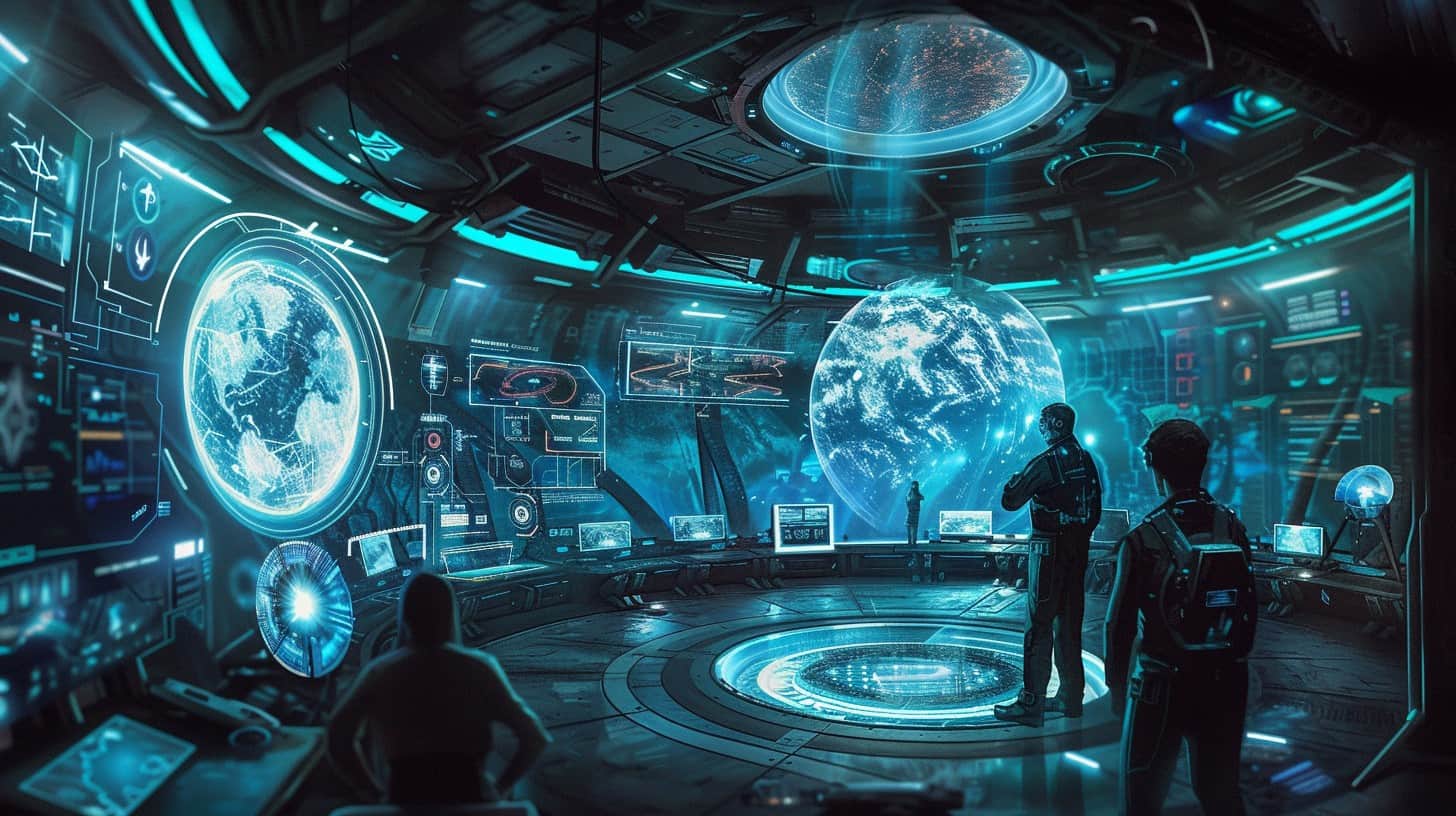Navigating a game’s menu can sometimes feel like wandering through a maze, with each on-screen prompt another confusing turn. You’re certainly not alone if you’ve ever found yourself scratching your head, trying to piece together the clues of an intricate interface that feels more cryptic than intuitive.
But don’t let that discourage you—as someone who has spent countless hours unraveling the intricacies of gaming UIs, I’m here to share some insights that will sweep away the haze.
Consider this article your trusty compass in the world of user interfaces, revealing why thoughtful UI design is just as pivotal as gripping gameplay. Are you ready for an epiphany? Stay tuned!
Key Takeaways
Game UI is the buttons, bars, and boxes on the screen that help you play games. It’s like road signs in your game.
There are two main parts of a game’s display: UI and HUD. The HUD shows you quick info like health or ammo while playing.
Good game UI design uses colors and shapes that make sense, so players can understand quickly without getting confused.
A responsive game UI changes size or shape to look good on any device, from big TVs to small phones.
Making a customizable user interface allows gamers to change their UI to fit what they like, making gaming more fun for them.
Table of Contents
Understanding UI in Gaming
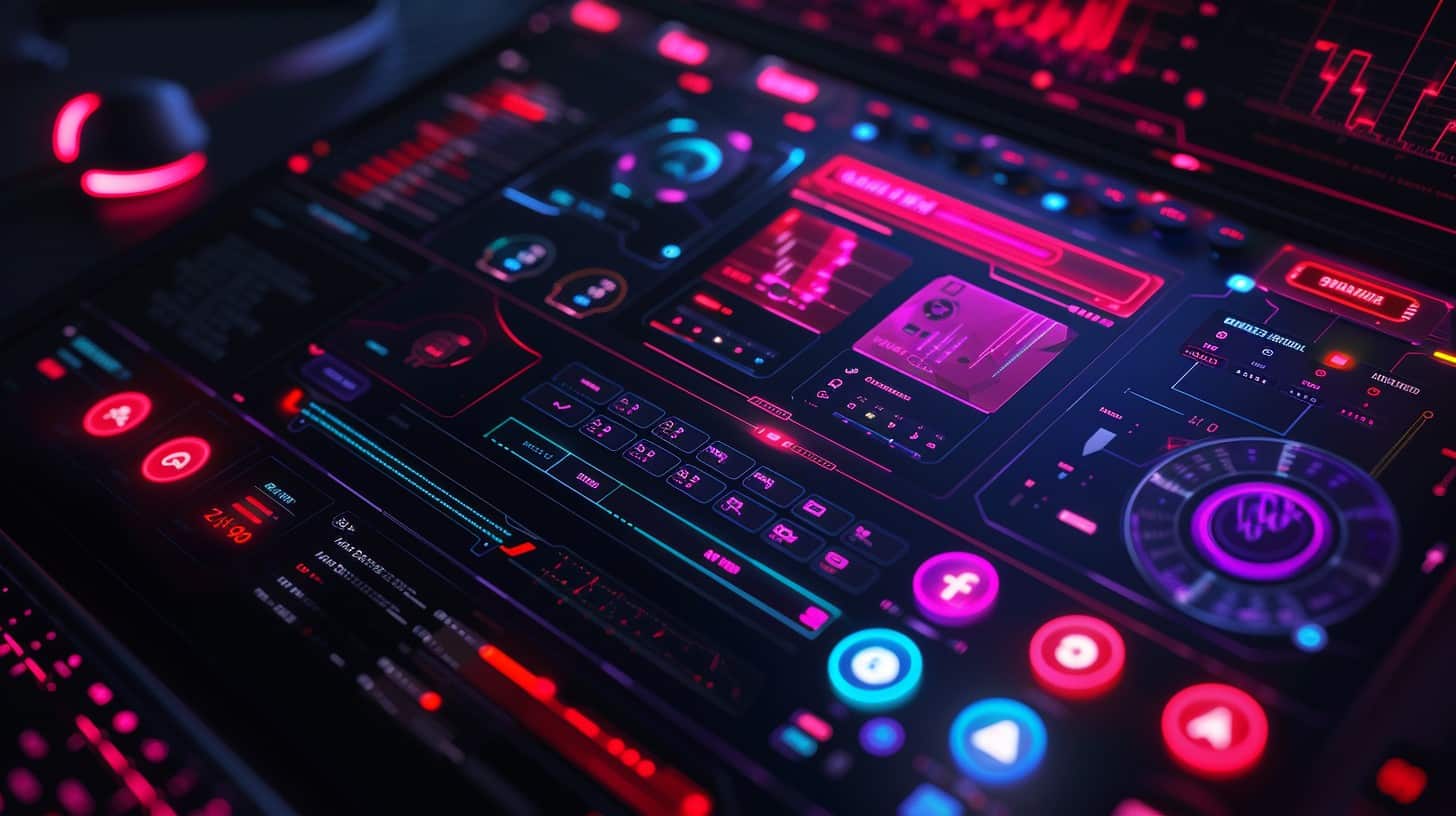
Alright, let’s dive into the virtual world and get our hands on the digital controls—ever wonder why you feel so in sync with your favorite game? It’s all about that sleek user interface, or UI, my friends.
A good UI is like having a secret telepathic link between us gamers and our beloved pixel-packed universes; it makes slaying dragons feel as natural as scrolling through your endless social feeds.
Now, stick around because we’re going to crack open this treasure chest of pixels and discover how SaaS UI/UX Design Services are totally leveling up the game… No pun intended!
Definition of Game UI
Game UI is all about the buttons, bars, and boxes you see on the screen when playing a video game. It’s like your game’s road signs and controls rolled into one—telling you what to do and how to do it.
Think of health bars that show if your character is in tip-top shape or about to drop, inventory screens where you pick your gear, or even those flashy menus where you decide to start playing or take a break.
You touch Game UI every time you play. From clicking ‘Start’ on the main menu to choosing which spell to cast during an epic battle—it’s there making sure things go smoothly for you.
Good Game UI blends in with the action; it doesn’t block up the view with clutter but helps guide your adventure without getting in the way. Great design means I’m immersed in saving kingdoms or scoring goals—not scratching my head confused by messy screens!
Difference between Game UI and HUD
So, we’ve talked about what Game UI means. Let’s dig into how it’s different from HUD. You know when you’re playing a game and see your character’s health, ammo, or magic meter? That stuff is the HUD – Heads-Up Display.
It gives you the quick info you need to stay in the game without searching through menus.
Now for Game UI – think of it like a tour guide for your video games. It helps you make choices with menus or tells you which button does what. HUDs show up during action, giving real-time updates on things like how many lives left or if danger’s nearby.
And get this: sometimes tough games show fewer hints on the screen so that players have more of a challenge figuring out what to do next! Both parts are super important for making games fun and keeping us engaged without any confusion.
Interactions of Players with UI in Games
I play a lot of games, and the UI is like my guide. It tells me where to go, what stuff I’ve got in my bag, and how healthy my character is feeling—all with just a glance at the screen.
Think about those health bars or inventory screens; they’re super handy! And when I’m deep into gaming, it’s awesome not to have to pause or open another menu to check on things.
Now, imagine playing a game without any of these helpers—that’s like heading out on a treasure hunt with no map! The UI keeps everything flowing smoothly so I can focus on playing and having fun.
Finding that sweet loot or making that epic move feels even better because the game lets me know exactly what’s going on without any fuss. Up next—how this all comes together during game development!
The Role of UI in Game Development
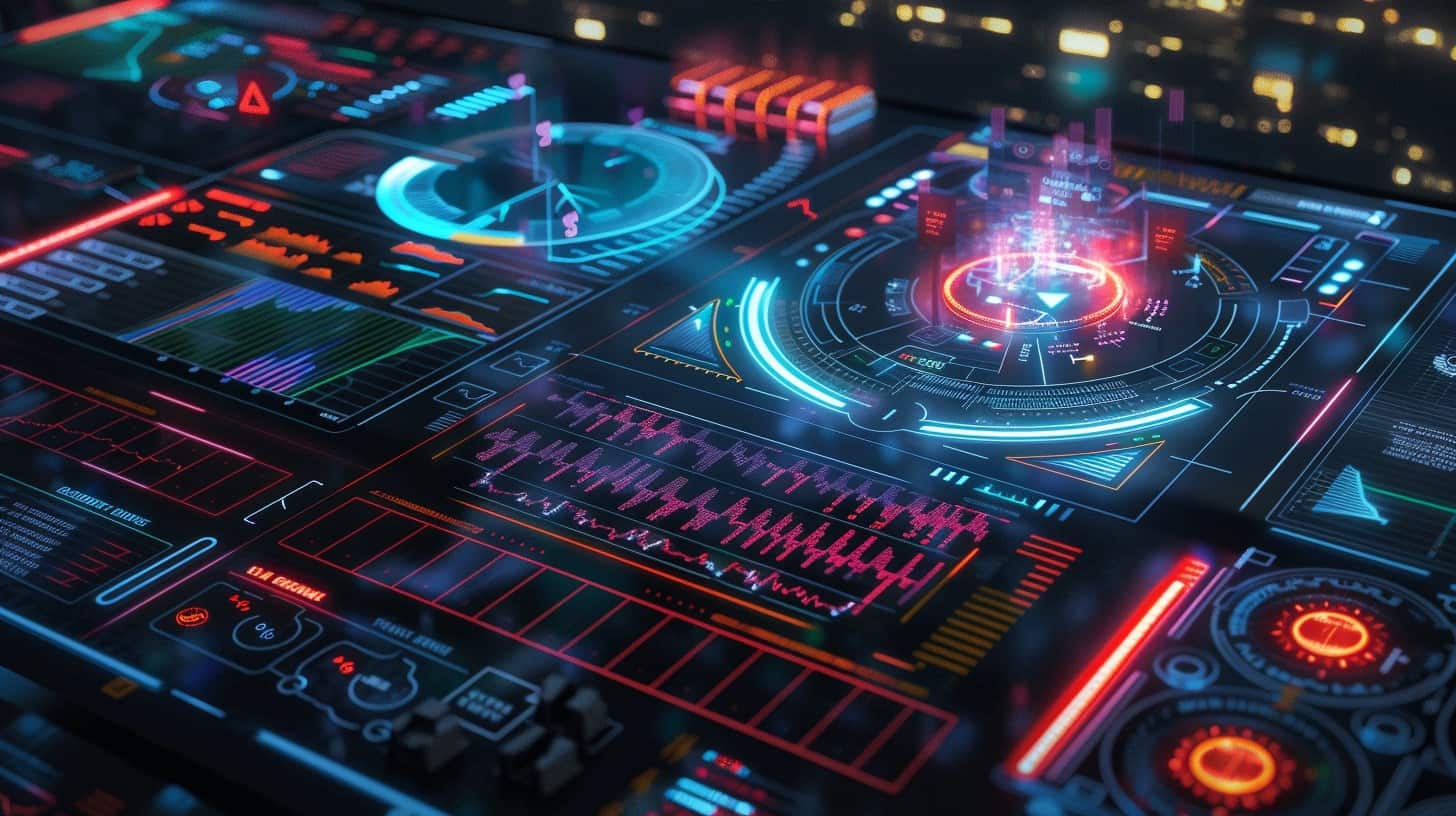
Alright, buckle up, ’cause I’m about to dive into the nitty-gritty of UI in game development. Imagine crafting a world where every button press feels like you’re casting a spell – that’s how crucial UI is; it’s the magic wand that turns good video games into immersive legends you just can’t put down.
Importance of UI in Video Games
I get super excited when I talk about UI in video games. It’s the magic that makes playing a breeze or a total pain. Picture this: You’re deep in a game, the action is intense, but you can easily find your health bar, ammo count, and map without missing a beat.
That’s good UI doing its work! It lays out everything you need right where it should be so you can focus on the fun.
Now think about those moments when you don’t even notice how smooth everything feels while playing. That seamless experience? All thanks to top-notch UI design—like having intuitive menus and buttons that react just right when tapped or clicked.
These little details keep us gamers happy and hooked, making sure we come back for more because let’s face it… nobody likes struggling with clunky controls or getting lost in confusing screens!
Basics of Game UI Design Principles
So, we’ve talked about how crucial UI is for gaming experiences. Now let’s dive into the nuts and bolts of making it all happen with some design know-how. In game UI design, colors, shapes, and typography are not just there to look pretty; they speak a language gamers understand without thinking too hard.
It’s like creating a secret code where every part means something special—for example, red often means danger or low health, while green can signal full health or safety.
Crafting that perfect game interface? It’s a bit like putting together a puzzle, where every piece has to fit just right. You’ve got your clear visual cues, so players always know what’s up—there’s no fun in getting lost in the menu when you should be battling dragons! And everything from the inventory screen to those ever-important health bars needs to work smoothly on any device.
Whether I’m playing on my phone or my console at home, I expect that same slick experience. No one wants their epic adventure ruined by clunky buttons or text too small to read!
Difference between Game UIs and Common UIs
Getting the basics down is just the start. Now let’s dive into what sets game UIs apart from your everyday app interfaces. Think of game UI as a special toolset—a bunch of cool gadgets that only video games get to play with.
These tools, like health bars and inventory screens, are more than just pretty decor; they’re crucial for making games fun and easy to jump into.
In contrast, common UIs you find in apps or on websites stick to helping users do stuff like send emails or order pizza without a big fuss. They’re about getting things done efficiently—no dragons or epic quests involved.
But in gaming? It’s all about creating a world where players can grok everything at a glance, whether it’s figuring out which button unleashes a mighty attack or how close you are to your next level-up moment.
Sure makes you appreciate the wizardry behind those health bars even more, huh?
Making Your Game User Interface Stand Out
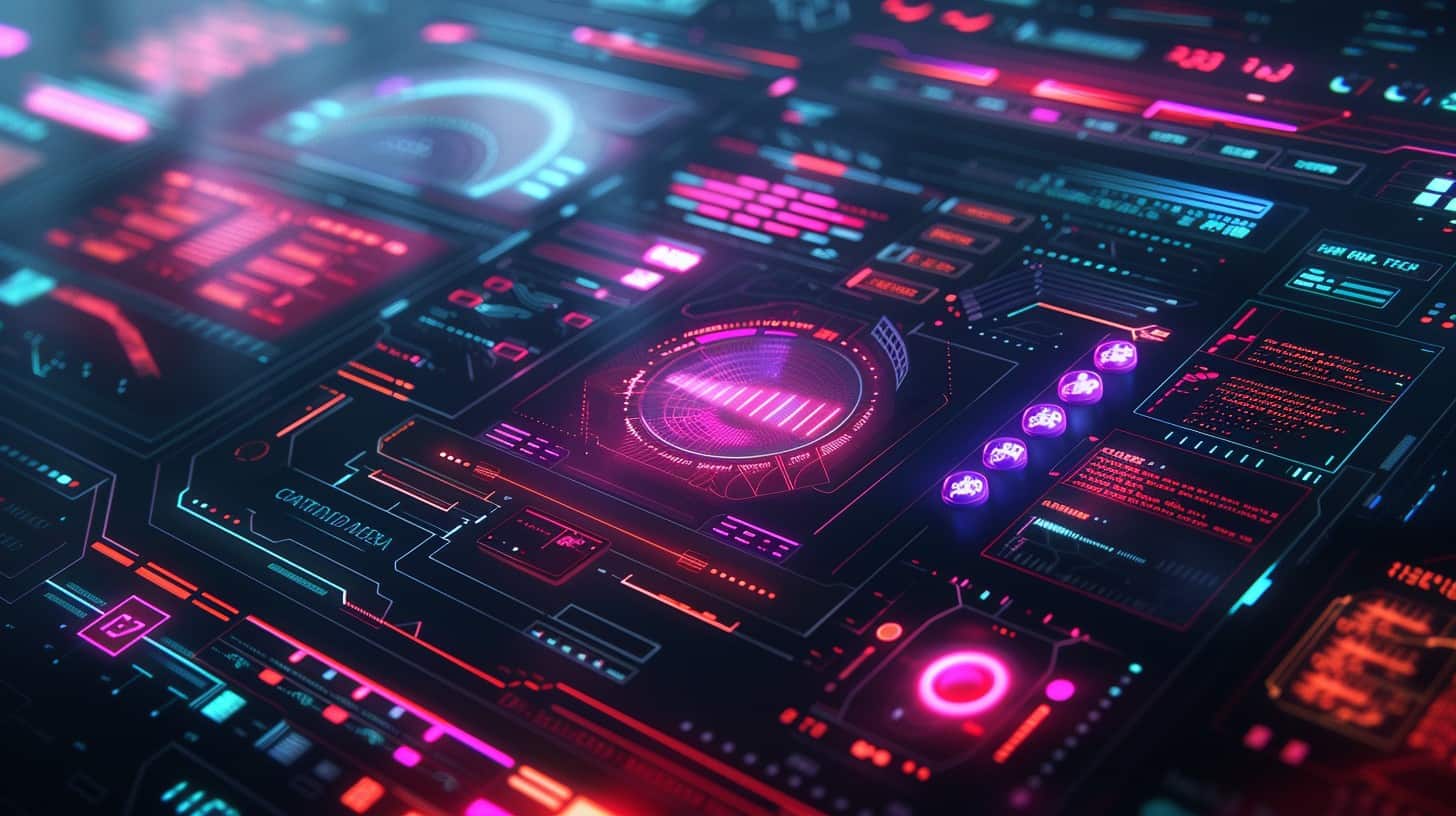
Let’s be honest, in the overcrowded world of gaming, having a UI that pops can make or break your game—it’s like the secret sauce that keeps gamers coming back for more… So stick around; I’m about to spill some insider tips on how to give your game interface that ‘wow’ factor.
Incorporating 2D and 3D Visuals in a Game UI
I gotta say, having 2D and 3D visuals in a game UI is pretty amazing. It’s like the cherry on top for keeping players hooked.
- Add depth with 3D: Imagine playing a game where stuff looks real. Cool, right? That’s what 3D does. It gives a sense of depth, making everything from menus to maps pop out.
- Keep it classic with 2D: Sometimes, simple is best. Flat, 2D icons and buttons are easy to understand, and they look clean on the screen.
- Mix ’em up: You know, games that use both styles are awesome. They can have fancy 3D characters but still keep the rest of the UI simple with 2D. Best of both worlds!
- Consider the vibe: Think about what feels right for your game. If it’s retro, stick with 2D; if it’s futuristic, maybe go all out with 3D.
- Make things move: We love when bits on the screen move or change when you do something. It could be a menu popping up or your character’s health bar filling up in 3D.
- Tailor for taste: Some folks love customizing their UI, so let ’em! With both kinds of visuals, they can make their setup just how they like it.
- Stay responsive: No matter if it’s on a big TV or a small phone screen, your UI has to look good and work well – that’s being responsive.
Customizable User Interface for Games
So, you’ve got a handle on blending those slick 2D and 3D visuals into your game’s UI. Now, let’s chat about cranking up the personal touch with customizable user interfaces. After all, it’s all about giving players the reins to tweak their experience until it fits just right.
- Kick – starting that personalization journey is simple with layout adjustments. Just imagine moving your health bar to the top left because that’s where your eyes dart first when things get dicey.
- Color schemes are more than just eye candy; they’re a statement. Players can dip their game world in neons or muted tones—whatever vibes with them.
- Fonts aren’t just letters; they’re the voice of your game, whispering secrets and shoutouts. Offering a choice makes ‘reading between the lines’ way more fun.
- Interactive elements should be like good pals—there when you need them without crowding your style. Letting players pick which buttons pop up adds to that cozy ‘my space’ feel.
- Ever thought about how your menu sings—or doesn’t—with the rest of your creation? Customizable UIs harmonize game aesthetics with player personality for one heck of a chorus.
- Accessibility isn’t just nice; it’s necessary. Bigger text for those who squint or color options for folks dealing with color blindness—we’re looking out for all our gaming family here.
- Responsiveness in a UI is like having a good dance partner—always in step, no matter the pace or platform. It adjusts so smoothly from big-screen action to mobile tap-taps.
Responsive User Interface for Games
Hey there, fellow gamers! Let’s chat about responsive user interfaces in games. It’s a feature we all love because it makes the game fit us, just like our favorite pair of jeans.
- A responsive UI is smart – it adjusts itself based on what I want and need during my gaming sessions. Think of it like a chameleon changing colors to match its environment.
- This means menus, buttons, and other parts of the game’s interface move around or change size so they look good whether I’m playing on my giant TV or squinting at my phone screen.
- With a responsive UI, I can use my touchscreen smoothly when playing on mobile, but switch to a mouse or keyboard when I hop over to PC – without any hiccups.
- Plus, the UI often saves my preferences. So if I bump up the font size because my eyes are tired after a marathon session, it stays that way next time I play.
- Game developers work hard to make sure the UI feels natural for any device. Some games even shift elements around based on how you’re holding your tablet!
- And for folks who might struggle with small icons or complicated menus, a responsive UI can be customized for better accessibility. That means more people get to join in the fun.
- Ever played a game and thought, “Ugh, this menu is annoying”? Well, responsive design aims to fix that by making sure everything is where it should be for an easy ride.
Components and Software in Game UI Design
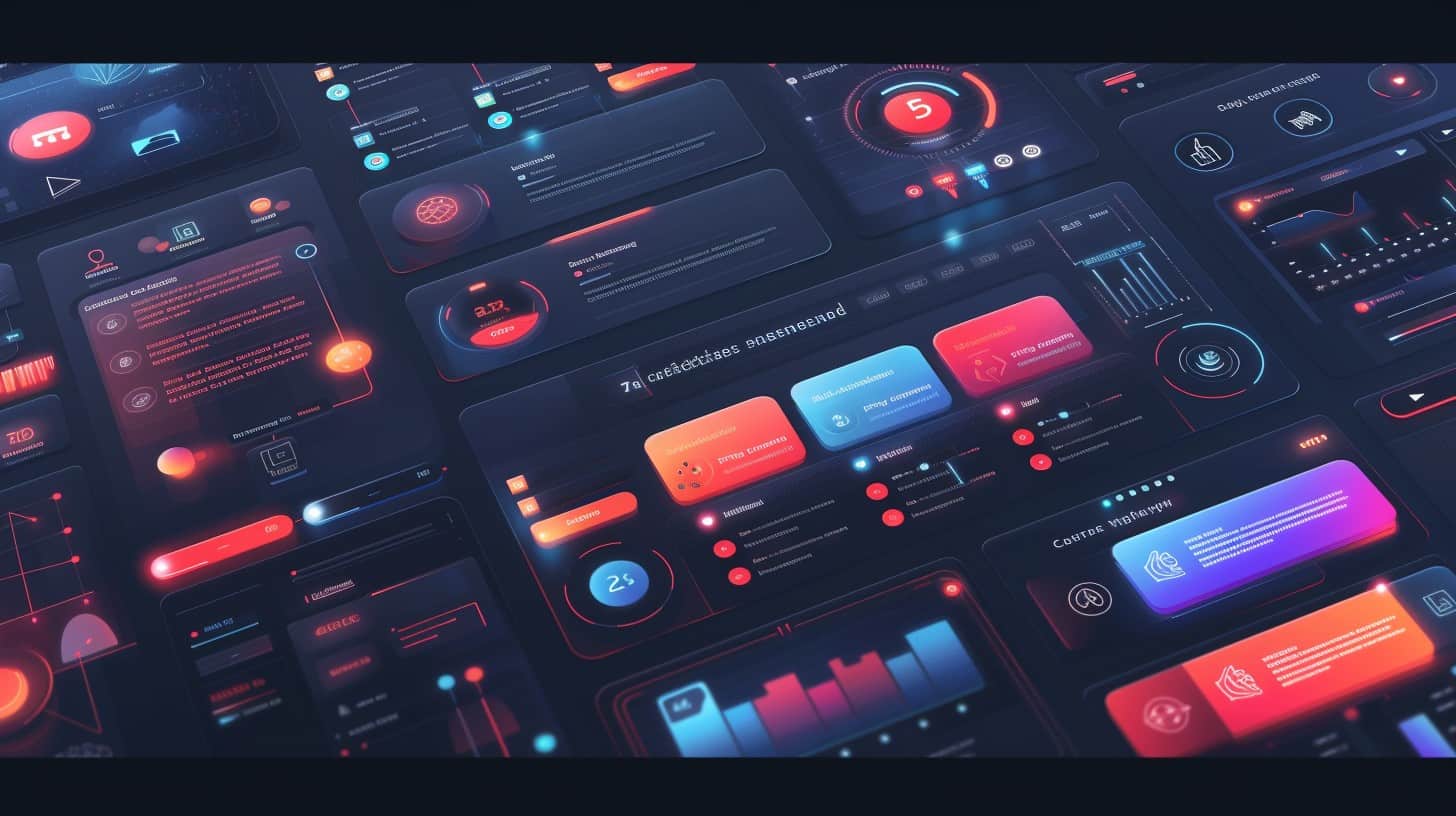
Alright, let’s dive into the nuts and bolts behind those slick menus and buttons we all take for granted in our favorite games. When it comes to crafting a game UI that doesn’t just do the job but blows gamers’ socks off, you’ve gotta have the right tools for the trade and know how to piece ’em together like a pro.
It’s kinda like building your own high-performance gaming rig: you need the best components under the hood, plus some killer software that brings everything to life on screen – without making players want to rage-quit before they’ve even started playing! So, let’s talk about what goes into picking out those shiny knobs and levers of game design..
Key Components of Game UI Design
Hey there, fellow gamers! Let’s dig into the guts of what makes a game’s user interface – or UI – really tick. It’s about way more than just looking cool; it’s the roadmap that guides us through our gaming adventures.
- Visibility of System Status: We like to know what’s going on with our characters at all times. So, things like health bars and ammo counts need to be clear and easy to see. This helps keep us in the loop without having to search around.
- Match Between System and Real World: The game should use symbols and words we’re already comfy with. Like, a red heart for health – we get that instantly because it’s something we see all around us, not just in games.
- User Control and Freedom: Ever been stuck in a menu without an ‘undo’ button? Yikes! Good UI design means we can easily back out of choices or take different paths without any hassle.
- Consistency and Standards: No one wants to relearn controls every time they pick up a new game. Buttons for jumping, shooting, or opening your inventory should feel familiar across most games we play.
- Error Prevention: A solid UI keeps silly mistakes to a minimum. Like warning us before we drop our epic sword or sell our only health potion.
- Recognition Rather Than Recall: With good UI design, we recognize what each icon does instead of having to remember it all. Saves brain power for the more important stuff – like beating bosses!
- Flexibility and Efficiency of Use: Whether you’re a newbie or an old-hand gamer, the UI should work well for everyone. Quick shortcuts for pros and easy walkthroughs for beginners make everyone happy.
- Aesthetic and Minimalist Design: No clutter here! Just the info we need presented in a slick style that doesn’t overwhelm us but still lets us appreciate the artistry behind it.
- Help Users Recognize, Diagnose, and Recover from Errors:
Choosing a Game UI Design Software
Picking the right software to design your game’s UI is like choosing the best paint for a masterpiece. You want tools that are powerful and flexible, so you can create something awesome.
Look for features that let you tweak colors, shapes, and animations easily. A great choice might be Adobe Photoshop or Illustrator—these are popular with pros because they’re full of options that help make interfaces look top-notch.
But hey, remember, not all games need the same kind of UI. If you’re working on a mobile game, find software geared towards smaller screens and touch interactions. It’s got to work well on phones and tablets where space is tight.
And usability? That’s key! Go for something that lets you test how players will see and use your UI—is it easy to understand? Are the buttons just right? This stuff matters because if gamers find your interface tricky or irritating, they might not stick around long enough to enjoy all the cool things in your game.
So dive in, play around with different programs, ask other designers what they like—it’ll pay off when players can’t get enough of your game’s look and feel!
Optimizing Game UI for Different Platforms

So, you’ve designed this killer game UI that’s like the love child of ‘The Legend of Zelda: Ocarina of Time’ and something from a cyberpunk fever dream. But here’s the kicker—will it wow gamers just as much on a tiny mobile screen as it does on a monster gaming rig? That’s what optimizing your game UI for different platforms is all about, folks—it’s ensuring your masterpiece doesn’t lose its mojo when jumping from PC to console to smartphone.
It’s like tailoring an epic rock anthem into an unplugged version; different vibes, same soul-stirring effect. Let me tell ya, finding that sweet spot where your UI is both rad and functional across all devices..
now that’s the art we’re diving into next!
How to Create a Balanced Game UI
Creating a balanced Game UI is part art, part science. It’s about making sure everything works together to help you play better and have more fun.
- Start with the basics of clarity and simplicity. Your game’s interface should be easy to read and understand. Use clear fonts and colors that stand out against the background.
- Make sure your layout feels intuitive. Place important items, like health bars or maps, where players expect to find them.
- Consistency is key across different screens. Menus, buttons, and other elements should look the same throughout your game.
- Keep functionality in mind. Every part of the UI should serve a purpose and help players interact with the game.
- Good aesthetics can’t be ignored. A well-designed UI adds to the game’s overall feeling and helps tell the story.
- Provide feedback instantly when players do something. Sound effects or visual cues let them know if they’re doing well or need to change tactics.
- Allow customization when possible. Letting players change their HUD can make the game more comfortable for them.
- Remember accessibility matters too. Design for all kinds of players, including those with impairments or color blindness.
Choosing Interface Elements for Mobile Games
Balancing your game UI is like preparing a perfect dish – it needs the right ingredients. Now let’s talk about picking interface elements specifically for mobile games.
- Keep it simple. Mobile screens are smaller, so your design should be clean and uncluttered. This means big buttons and clear text that players can see with just a glance.
- Make sure everything looks different enough. Colors, shapes, and sizes should help players tell one element from another easily. No one wants to hit the wrong button because they all look alike!
- Say more with less. With limited space, you’ve got to get to the point. Use icons and symbols that make sense and cut down on words.
- Go for clarity. Interface elements should be obvious in their use. Players shouldn’t have to guess what a button does or where a swipe will take them.
- Create a cohesive look. All parts of your UI should fit together like pieces of a puzzle, making for a smooth user experience that doesn’t confuse gamers.
- Touch – friendly design is key. Remember, players will navigate with their fingers, so those touchpoints need to be large enough to interact with, without zooming or squinting.
- The visual style must reflect your game’s vibe. If you’re making an eerie horror game, bright and bubbly UI elements might break the mood—keep it thematic.
- Adaptability is important too! Some gamers play on old phones; others have the latest models—your UI should look good on any device.
The Future of UI in Gaming
Alright, let’s fast-forward a bit and dream about the shiny future of UI in gaming. Imagine this: you’re stepping into a world where the interface isn’t just part of the game; it’s an experience all its own.
Gone are the days when UI was just some static health bars or ammo counts slapped on a screen – we’re going to see interfaces that breathe with us, adapt to our playstyles, and maybe even mess with our heads (in a fun way, I promise).
Picture pulling off those slick moves in-game and having your UI cheer you on with lights and colors that make Fourth of July fireworks seem bland. Oh man, I can hardly wait for what’s next—these are seriously exciting times for gamers like us!
The Evolution of UI in the Gaming Industry
Game UI has come a long way since the early days. Back then, we just had simple bars and numbers to show our health or score. Now it’s all about feeling like you’re really in the game world.
Developers have been getting super creative, using 3D and animation to make everything pop.
Think about games like Dead Space – they threw out the old playbook with their cool diegetic UI. Everything you needed to know was part of the game itself, not on some separate screen.
It made things feel more real, and I loved that! As new tech like VR gets big, UI is gonna keep changing to keep up with how we play – making everything more immersive and awesome for us gamers!
The Market and Demand of UI in Games
I’ve been around the gaming block and let me tell you, UI is like the secret sauce that makes a game finger-licking good. We’re talking about demand through the roof for top-notch UI designers who really get what gamers want.
Everyone’s scrambling to stand out in this digital buffet by whipping up user interfaces that are not just easy on the eyes but also intuitive like your momma’s home cooking.
Look around, and you’ll see jobs popping up everyday calling for folks who can blend art with tech to create those killer game experiences we all crave. It’s an exciting time to jump into this pool—the water’s great because players, they don’t just want games, they want games that feel right; where every click or tap brings them deeper into other worlds.
If crafting these journeys sounds like your cup of tea (or energy drink?), then strap in because gamer land needs more UI wizards like yesterday!
FAQs About UI in Gaming
What’s UI and why does it matter in games?
Well, think of UI, which stands for “user interface,” as all the buttons and menus you click in a game. It’s super important because good UI design makes sure gamers like us can play without getting lost or frustrated!
So… UI and UX are the same thing?
Nope! While they’re buddies working together to make gaming awesome, they’ve got different jobs. UX — that’s “user experience” — is all about how smooth and fun your game feels overall.
Heads-up display sounds cool—what’s that about?
Oh, the heads-up display—or HUD—is like your secret gaming helper! It shows you key info right on screen while you play. Think health bars, maps… It keeps things clear so you can focus on winning!
Can I find this fancy UI stuff in mobile games too?
You bet! User-friendly interfaces aren’t just for big console games; designers put them into mobile gaming too! That way, even on a small phone screen—you’re tapping away with ease.
Is there more than one type of interface design in video games?
Absolutely (and isn’t that cool?) There’s GUI—that catchy term for graphical user interface—and its pals non-diegetic elements (stuff outside the game world), diegetic (things inside the game), spatial (like virtual reality) …so much variety to help players dive into different worlds!
Does someone get to make these interfaces? How rad is that job?!
Totally rad! Being an interface designer means creating those screens we see and use—you know: when you adjust settings or choose weapons? They work magic with graphics to make our gaming smooth sailing… Uh oh, now I wanna do it too!
